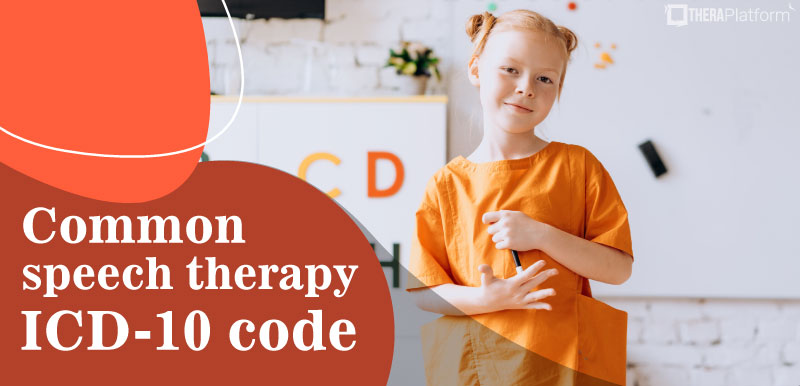DIBELS

DIBELS (Dynamic Indicators of Basic Early Literacy Skills) assessment is commonly used to assess the development of early literacy and reading skills in children.
The DIBELS assesses several areas of literacy development, including skills such as phonemic awareness and reading comprehension in several age groups. What grades are appropriate for DIBELS? It can be administered to children from Kindergarten through eighth grade.
Speech language pathologists (SLPs) can administer the DIBELS to evaluate and monitor a child’s early literacy skills. By analyzing the results, SLPs can identify a child’s areas of strengths and difficulties, and create an individualized treatment plan to address a child’s delays. SLPs can also use the DIBELS assessment to monitor a child’s progress in therapy.
Let’s take a close look at the DIBELS assessment, a valuable tool that SLPs can utilize to identify literacy delays and guide evidence-based intervention. We’ll cover the components of the DIBELS assessment, administration, scoring, and interpretation of the test, and more.
Overview of early literacy skills
Early literacy skills serve as a foundation for a child’s reading and writing abilities as they grow. Children are expected to develop these skills during their early academic years. Through this, young children form the building blocks necessary for becoming a strong reader.
According to research, a child’s early literacy skills strongly predict their future academic success. These skills have also been linked to higher graduation rates and improved productivity later in a child’s life.
Early literacy skills include:
- Phonemic awareness: Being able to identify and manipulate sounds in spoken words.
- Vocabulary development: Understanding what a variety of words mean can improve a child’s comprehension and expression during literacy-based tasks.
- Phonics: Ability to match sounds of spoken language with individual letters or groups of letters.
- Fluency: Ability to read text easily (includes accuracy, speed, expression, and comprehension)
- Comprehension: Skills involved in reading, processing, and understanding the meaning of written text.
Speech therapists play an important role in helping a child develop early literacy skills. By conducting language and literacy evaluations using tools such as the DIBELS assessment, the SLP can identify and diagnose the presence of a literacy disorder.
Through weekly speech therapy sessions, SLPs can use evidence-based treatment techniques to improve a child’s literacy development by targeting their specific areas of need.
What is DIBELS testing?
The DIBELS is a research-based test containing several subtests that predict a child’s later reading proficiency. These subtests yield a composite score that is considered the single best predictor of later reading development.
The subtests included in the DIBELS - 8th Edition (2023) are:
- Letter Naming Fluency (LNF)
- Phonemic Segmentation Fluency (PSF)
- Nonsense Word Fluency (NWF)
- Word Reading Fluency (WRF)
- Oral Reading FLuency (ORF)
- Maze
The subtests align with four out of five “Big Ideas” in reading, which have been identified by the National Reading Panel.
These include:
- Phonemic awareness
- Alphabetic principle
- Accuracy and fluency with text
- Vocabulary
- Comprehension
The LNF, PSF, and NWF subtests of the DIBELS can be used to screen a child for dyslexia. According to the International Dyslexia Association (IDA), students in Kindergarten through Second Grade should participate in universal screening for dyslexia.
Five of the DIBELS subtests are brief, and designed to be administered in 60-seconds, in a quiet individual setting. Maze is a 3-minute measure that is designed to be administered in a group setting.
The subtests are timed, so a child’s efficiency and accuracy in reading skills are considered.
The results of the DIBELS include raw scores, equated scaled scores, percentile ranks, growth zones, and composite scores.
Interpreting DIBELS results
The raw scores that the DIBELS yields can be used to determine a child’s risk for reading difficulties.
Determining a child’s risk cut-score can be used to identify a client who is well below benchmark performance and is at risk for reading difficulties. Benchmark goals classify clients who are reaching benchmark levels and are at minimal risk for meeting proficiency goals. The ambitious goal cut-score identifies students who are at the least risk of not meeting benchmarks for reading.
For tracking growth, rather than comparing raw scores, SLPs can examine a child’s percentile gains compared to other students with a similar starting score. These are referred to as Zones of Growth on the DIBELS scoring. The NWF and ORF subtests are considered to be the strongest measure for capturing change in performance over time.
It’s crucial to look specifically at a client’s strengths and weaknesses on the DIBELS Assessment. This allows therapists to identify areas of strength and difficulties, keeping in mind that the components of literacy development are interconnected.
Therapists can identify a child’s strengths by determining which areas of literacy development the client scored within normal limits on. Subtests in which the child scored below normal on, or individual test items that were scored as incorrect can be considered difficulties. These areas can be used to formulate goals for intervention planning.
Start 30-day Free Trial and explore TheraPlatform. HIPAA Compliant Video and Practice Management Software for Therapists.
Application of DIBELS in speech language therapy
SLPs can examine the results of the DIBELS Assessment to identify the presence of early literacy delays and disorders in children.
Scaled scores can be used to determine the severity rating for a possible diagnosis of a Specific Reading Disorder. The ICD-10 code F81.0 would be used to specify this medical diagnosis. The code would be used to specify reading disorders including: Developmental dyslexia, developmental reading disorder, difficulty reading, specific reading disorder. The ICD-10 code for a diagnosis of Dyslexia is R48.0.
A child’s phonological awareness skills can be determined by looking at their performance on certain subtests of the DIBELS assessment. The Phonemic Segmentation Fluency (PSF) subtest in particular will provide SLPs with information on a child’s skills in this area.
By comparing results of an initial administration of the DIBELS Assessment with future administrations, therapists can monitor a client’s progress towards goals. These results can also assist with evaluating the outcomes of interventions used during Speech Therapy,
Strategies for using DIBELS in speech therapy
Speech therapists can use the results of a client’s performance on the DIBELS Assessment to create an individualized intervention plan. Areas of weakness (subtests for which a client’s scaled score is below average) can be correlated with specific literacy skills that the therapist can target as goals.
ASHA states that individuals can experience combined deficits in multiple areas of reading and writing. For example, children who have reduced phonemic awareness skills may also have reduced alphabetic principle skills. Also, children who have difficulty reading words often have deficits in writing and spelling.
SLPs should identify the client’s strengths, and consider these when developing the child’s individualized intervention plan. Considering these strengths can help the clinician develop intervention strategies. For example, if a client demonstrates age-appropriate accuracy and fluency with text, the clinician can build off of these skills while targeting comprehension.
When targeting areas of difficulty from the DIBELS Assessment as therapy goals, speech therapists can follow best practices by incorporating evidence-based literacy instructional approaches.
The most commonly used intervention programs include:
- Orton-Gillingham Approach
- Wilson Reading System
- Sounds-Write
- Lindamood Bell
- Barton Reading and Spelling
Several of the above programs are considered to be multisensory instructional approaches, which can be effective ways of enhancing a child’s literacy development. Activities involved in the Orton-Gillingham Approach, for example, might include having the child draw a letter in shaving cream.
Collaboration and communication with educators and parents
SLPs should collaborate on the results of a client’s DIBELS assessment results with the rest of a client’s interdisciplinary team, including parents, teachers, and other therapists.
Speech language pathologists should also collaborate with the child’s literacy support team. This team often includes a teacher, tutor, and/or assistant providing group or individual reading support to the child at school.
Speech therapists can also provide parents with home-based literacy strategies and resources. This way, the child can continue practicing and developing their literacy skills outside of therapy. Sharing specific activities (such as sound manipulation activities for phonological awareness) and techniques (like using imagery to improve reading comprehension) can accelerate his or her progress.
Ethical considerations in using DIBELS
When administering the DIBELS Assessment, speech therapists should maintain cultural sensitivity and diversity. For instance, it’s important to consider a client’s exposure to multiple languages, cultural background, native language, and prior cultural experiences when interpreting the results of the DIBELS.
To comply with HIPAA guidelines, assessment data and results must be kept confidential. Therapists must store record forms with identifying client information in a secure, confidential place, and may only discuss results with caregivers or individuals authorized/involved in the child’s care.
SLPs should only interpret the results of a child’s DIBELS assessment to create an individualized treatment plan if they have sufficient experience and training in the area of literacy. This can ensure the therapist adheres to professional standards and guidelines.
The DIBELS Assessment is a valuable assessment tool that evaluates a child’s foundational reading skills by examining several key domains in reading. Speech therapists can use the results to identify the presence of a literacy disorder or identify children who are at risk for reading disorders such as Dyslexia. The results can be used to guide intervention by contributing to goal development.
SLPs should stay committed to continued professional development in ways like becoming trained in literacy intervention methods, such as the Orton-Gillingham reading program. It’s also important to learn more about some of the most common assessments that speech therapists administer or interpret, such as the DIBELS Assessment.
Resources
SLPs can also use an EHR, practice management and teletherapy tool like TheraPlatform to complete documentation and billing for speech and language evaluations. Sign up for a 30-day, free trial of TheraPlatform with no credit card required. Cancel anytime.
More resources
- Therapy resources and worksheets
- Therapy private practice courses
- Ultimate teletherapy ebook
- The Ultimate Insurance Billing Guide for Therapists
- The Ultimate Guide to Starting a Private Therapy Practice




